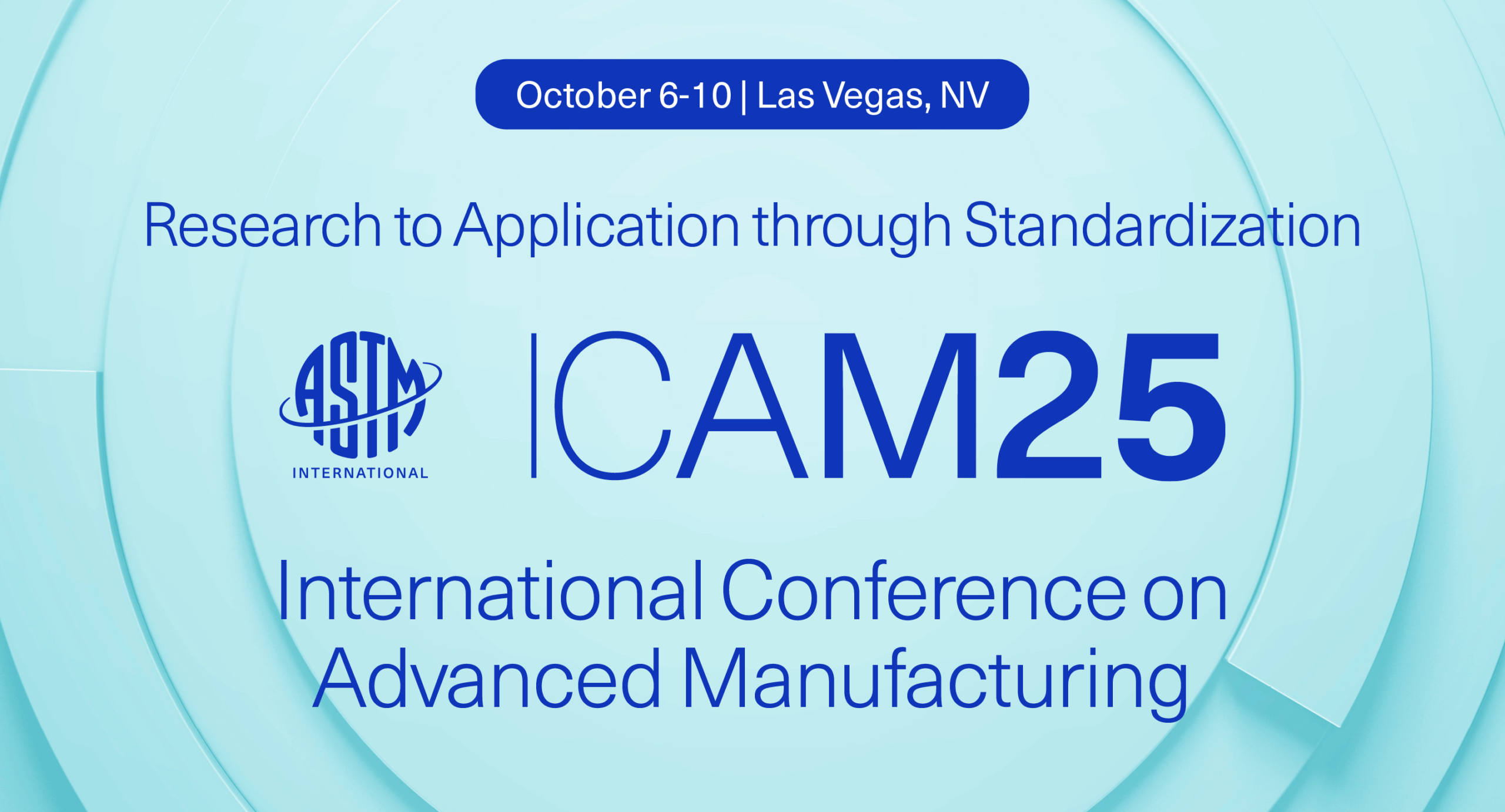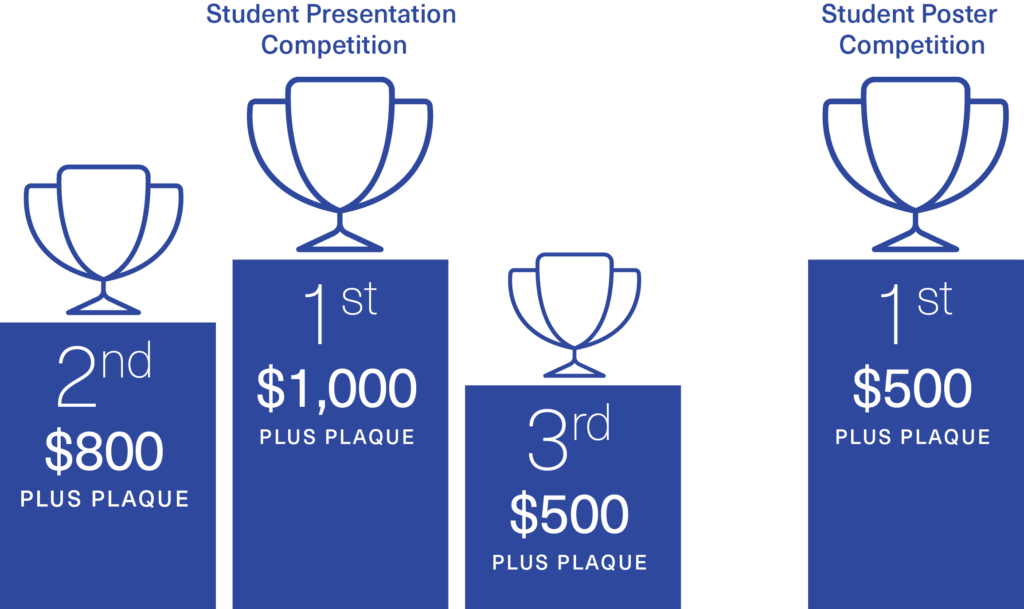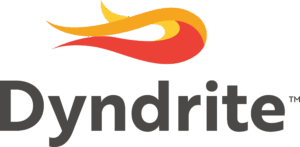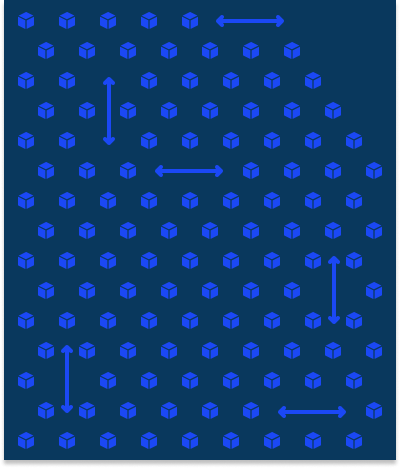About
The ASTM International Conference on Advanced Manufacturing (ICAM) is the premier annual event for advancing the field of additive and advanced manufacturing through collaboration, innovation, and standardization. ICAM 2025 is proudly hosted by the ASTM International Additive Manufacturing Center of Excellence (AM CoE) and supported by over a dozen ASTM technical committees.
ICAM brings together global leaders from industry, academia, government, regulatory agencies, and national labs to address the critical needs of advanced manufacturing. The conference emphasizes standardization, qualification, and certification across the entire advanced manufacturing value chain; providing a unique platform to address the application-specific requirements of various industries while covering fundamental aspects of advanced manufacturing processes. The ultimate goal is to transition cutting-edge research into practical applications through standardization.
Key focus areas include:
- Industry standards
- Design principles
- Qualification and certification
- Innovations in manufacturing
- Materials and processes
- Data management, sharing, and analysis
ICAM is where experts from around the globe converge to share insights, present the latest developments, and foster meaningful collaborations. The conference sets the stage for addressing current challenges and future opportunities in advanced manufacturing, with a strong emphasis on the seamless transition of research into real-world applications.
Organizers
Registration
ICAM 2025 Registration Opens Soon!
Your conference registration gives you full access to the ICAM 2025 experience:
- Access to all technical presentations across 26 symposia and Panel Discussions
- Entry to the exhibit hall showcasing cutting-edge solutions and innovations
- Admission to daily Keynote Breakfasts featuring thought leaders and industry visionaries
- Fully unlock the ICAM 2025 mobile app for real-time scheduling and instant networking with peers
- Post-event access to video recordings of Keynote Presentations, Panel Discussions, and digital copies of presentation abstracts
*Registration is required to attend all conference events, including the exhibition and conference social functions.
*By staying in the ICAM 2025 room block at the Westgate, you will receive a 10% discount on conference registration fees.
*Conference registration does not include travel, transportation, or hotel reservations. Attendees, speakers and sponsors are responsible for all travel, transportation, and hotel accommodations.
Registration Rates
| Early Bird (Ends June 27) | Advanced (June 28 - Aug 22) | Regular (Aug 23 - Oct 10) |
|
|---|---|---|---|
| Attendee (Non-ASTM Member) | $995 | $1,095 | $1,195 |
| Attendee (ASTM Member) | $895 | $995 | $1,095 |
| Speaker (Invited/Regular) | $770 | $845 | $920 |
| Scientific Organizing Committee | $695 | $760 | $825 |
| Student | $575 | $625 | $675 |
| Government | $895 | $895 | $895 |
Group Discounts: Register 5 or more attendees at the same time and receive 20% off each registration.
Registration Add-ons
ICAM 2025 Awards Ceremony – Wednesday, October 8 Celebrate innovation and excellence in the field at our annual awards ceremony.
- Tickets: $50.00, includes complimentary beverages and hors d’oeuvres, and can be purchased during online registration process.
- Complimentary access for:
- Members of the Scientific Organizing Committee
- Student registrants
- Award recipients
- Sponsors
Payment Information
During the registration process online, you will be asked to select your preferred form of payment. ICAM 2025 accepts the following payment methods:
- Credit Card
- Check
- Wire Transfer
- ACH (Electronic Check)
If you select wire transfer, check, or electronic check (ACH) as your payment method, you will receive an invoice directly through the registration tool. Detailed payment instructions will be provided upon completion of your registration form.
Cancellation & Refund Policy
Please review our refund schedule below:
- Full Refund: Requests received by September 5, 2025
- 50% Refund: Requests received between September 6–September 19, 2025
- No Refund: Requests received on or after September 20, 2025
All cancellation requests must be submitted to ICAM
Hotel & Travel
ICAM Hotel Block Opens Soon!
ICAM 2025 will be held at the Westgate Las Vegas Resort & Casino and has secured discounted group rates for registrants. By staying in the ICAM 2025 room block at the Westgate, you will receive a 10% discount on conference registration fees.
Staying at our contracted hotel is important to ASTM, to the hotel where we are holding this meeting, and to you as an attendee. When you reserve a guest room at another hotel and an ASTM contracted room goes unsold, ASTM is liable and must pay a non-performance penalty fee to the hotel. Please support ASTM by reserving your sleeping room at our official hotel.
The discounted rate will be honored until the block is full, but no later than September 5, 2025. The ICAM 2025 rate is $149.00 plus tax and resort fee.
- Government per diem rates are established by fiscal year and take effect on October 1 each year. Please note that you will be charged the applicable rate at the time of the meeting—not the rate in effect when you book.
- Reservations at the government per diem rate can be made through our online booking system. Be sure to present valid government ID at check-in to confirm eligibility.
- To view current CONUS per diem rates, visit GSA.gov.
Symposia
Students
ICAM 2025 Student Presentation and Poster Competition
Full-time/part-time graduate and undergraduate students wil participate in the Student Presentation and Poster Competition that will be held in conjunction with ICAM 2025. Students will compete in the 3 submission categories below.
*IMPORTANT*
— Students can only submit two abstracts in total.
— Each abstract must be submitted to a different student category (e.g., each student cannot have 2 abstracts submitted to the Poster Competition).
Download Student Competition Flyer
Student Presentation Categories:
| 01. | Student Oral Presentation Competition |
| ▸ Consists of 2 evaluation rounds. ─ Round 01 – Preliminary Evaluations (Virtual) ─ Round 02 – Final Evaluations (In-Person) ▸ Accepted abstracts will proceed to the Preliminary Evaluations (Round 01). ▸ Submit a 15-minute recording of your presentation for evaluation. ▸ Shortlisted abstracts (Top 20) will be selected to present in-person in front of a panel of judges at the prestigious Student Oral Presentation Competition (Round 02). ▸ Abstracts not shortlisted will be re-allocated under the Student Oral Presentation Sessions, where students can still give a non-evaluated, in-person oral presentation. |
|
| 02. | Student Poster Competition |
| ▸ In-person poster presentations during the ICAM week. ▸ Students will be required to be available at a designated time to present their posters. ▸ Judges will be present during this time to evaluate the poster presentations. ▸ Resources (instructions, guidelines, templates, etc.) will be provided at a later date. |
|
| 03. | Student Oral Presentation Sessions (Non-Competing) |
| ▸ In-person oral presentations that will not be evaluated for competition. ▸ Abstracts submitted to the Oral Presentation Competition that have not been shortlisted after Round 01 will also be re-allocated here. |
Prizes and Awards:
Key Dates for Student Submissions:
| Abstract Submission Deadline | April 25 (Fri) |
| Notification to Accepted Students | May 20 (Mon) |
| Presentations due for Preliminary Evaluations (Round 01) --- Student Oral Presentation Competition | Jun 27 (Fri) |
| Release of Results for Preliminary Evaluations (Round 01) --- Student Oral Presentation Competition | Aug 15 (Fri) |
| In-Person Final Evaluations (Round 02) --- Student Oral Presentation Competition | Oct 06 (Mon) |
| Student Poster Competition | Oct 06 (Mon) |
| Student Oral Presentation Sessions | Oct 07 (Tue) - Oct 09 (Thu) |
Note:
- The number of students selected for this competition will be based on the quality of the submitted abstracts and the availability of space within the program and conference venue.
- Students may only submit their abstracts to the Student Presentation and Poster Competition symposium for consideration.
Journals
ASTM International and affiliated organizations will publish several topical collections in connection with ICAM 2025. Only submissions presented at ICAM 2025 will be eligible for inclusion in the following collections:
Sponsorship
Sponsorship opportunities for ICAM 2025 are now open!
Download the Sponsorship Brochure
Why Sponsor ICAM 2025?
ICAM isn’t just another conference. ICAM 2025 is where the future of advanced manufacturing is decided. Sponsors are positioned as trusted collaborators, not just exhibitors, enabling direct impact on the industry while engaging with a highly targeted and engaged audience.
- Amplify Branding and Visibility
- Drive Thought Leadership
- Build Strategic Relationships
- Accelerate Market Growth
- Influence Standards & Practices
For inquiries or to secure your sponsorship, contact us at icam@astm.org.
Diamond Sponsors
Platinum Sponsors
ICAM 2024
View the highlights from ICAM 2024!








